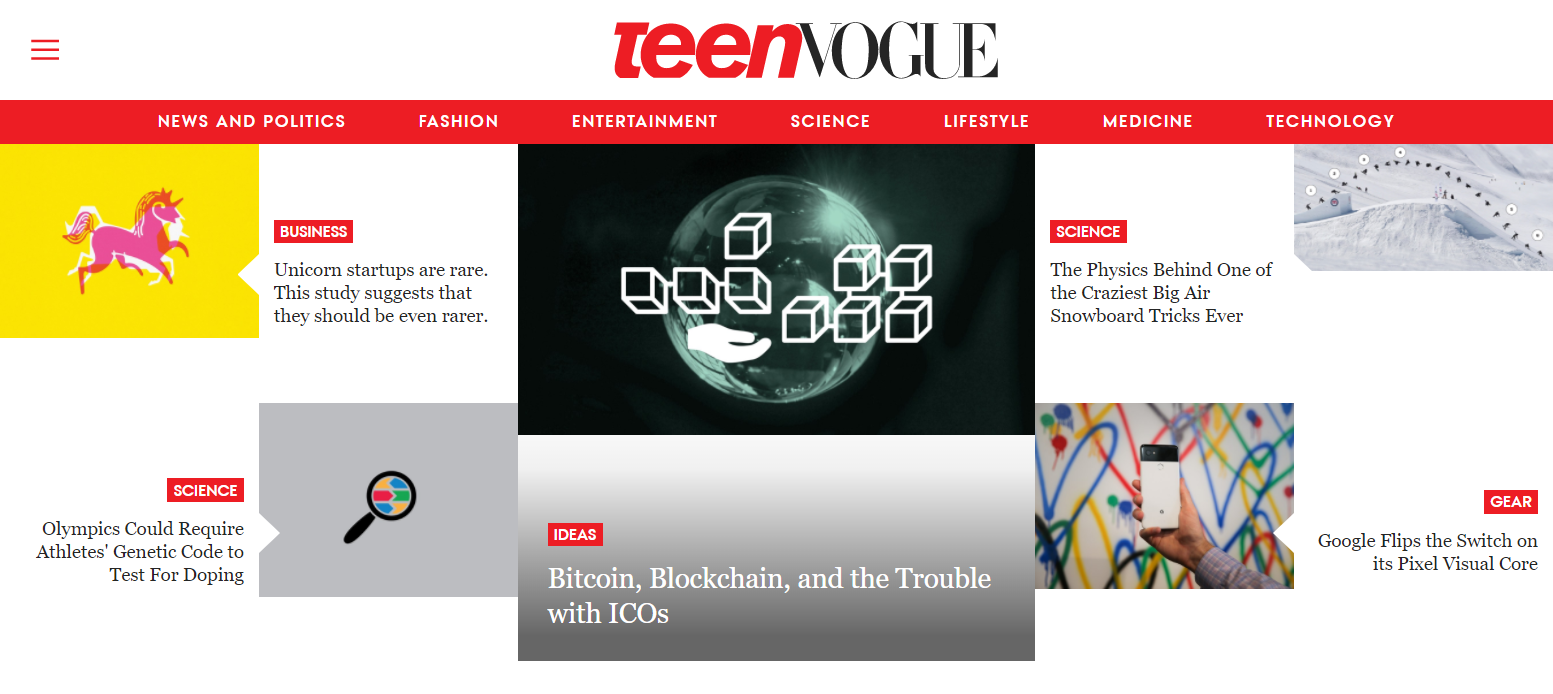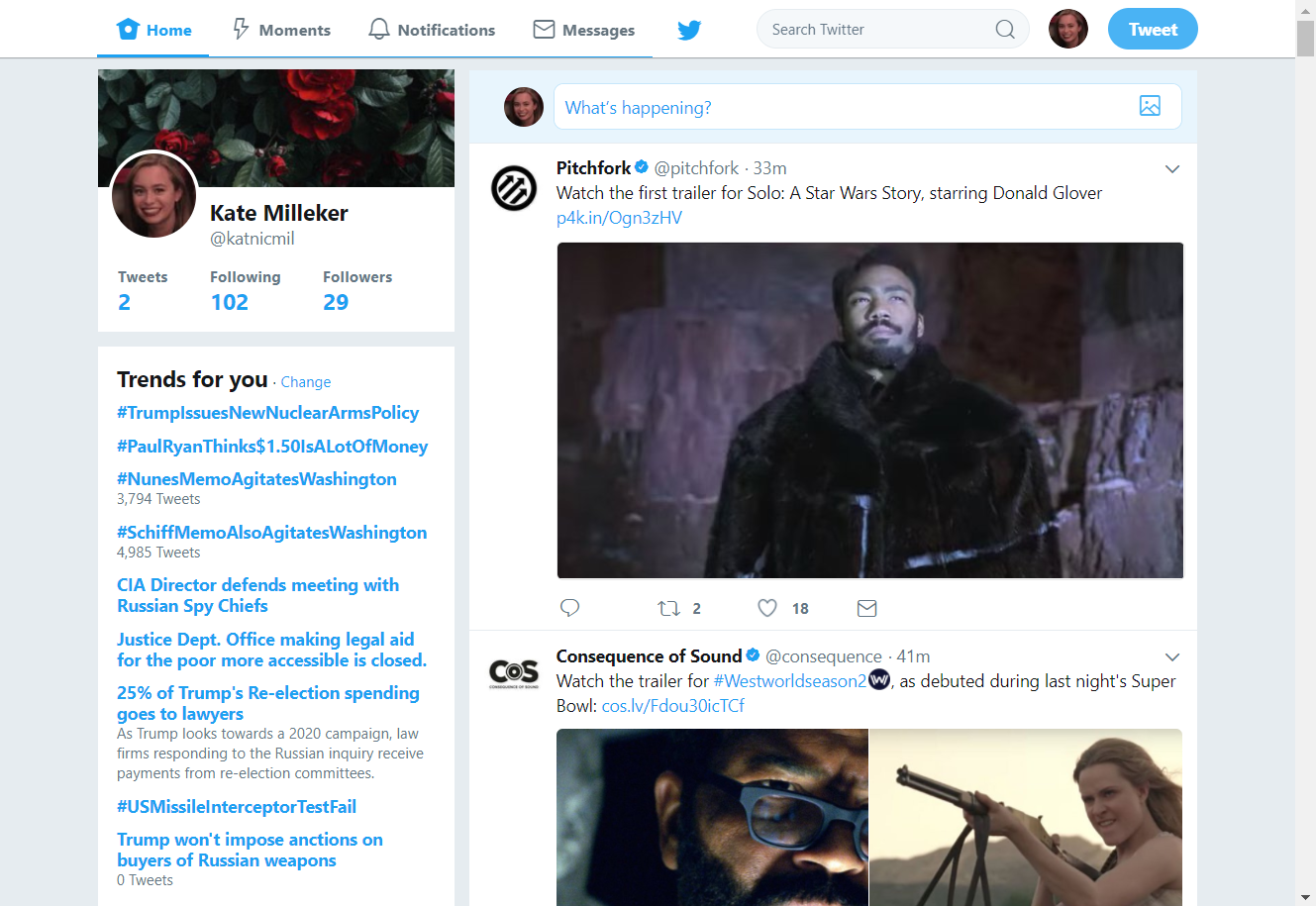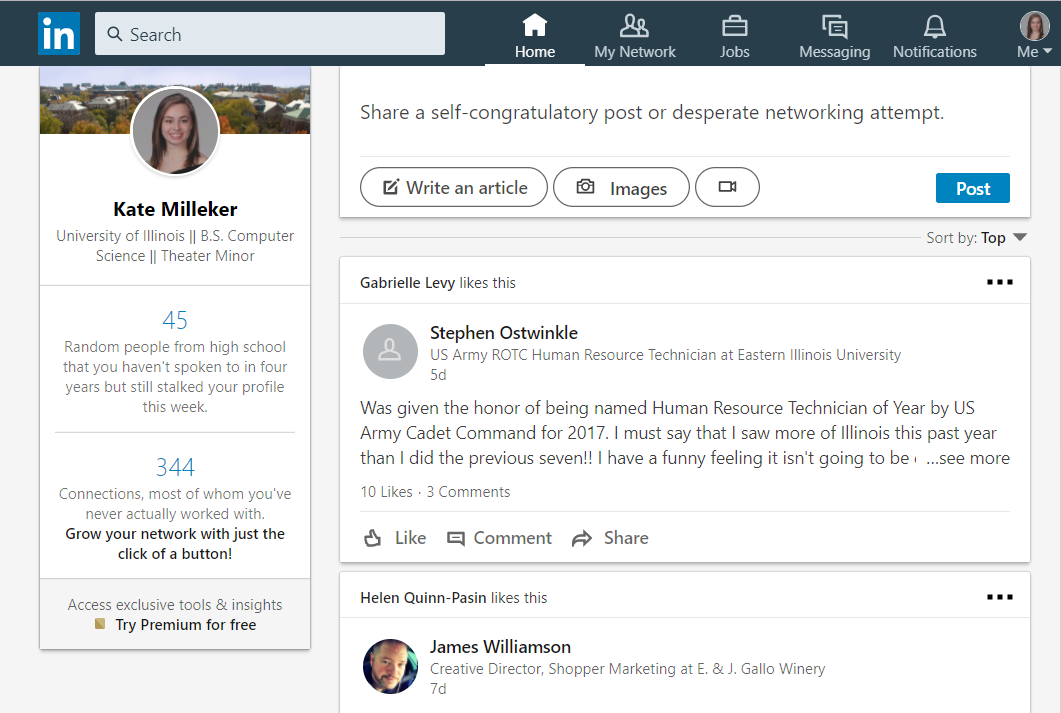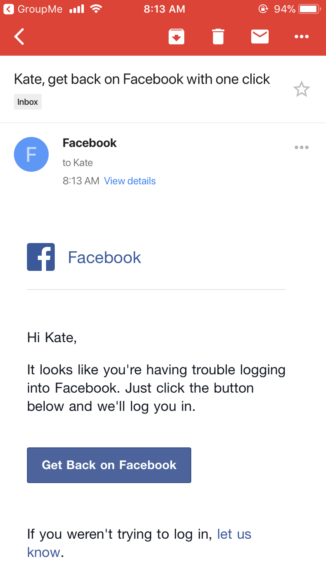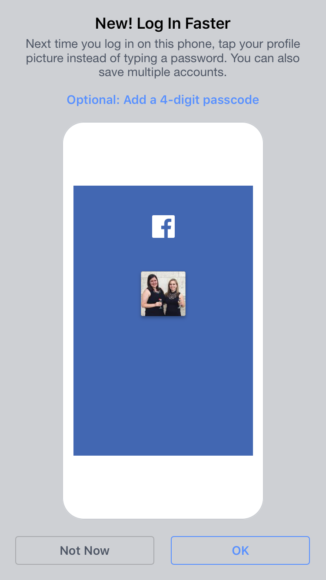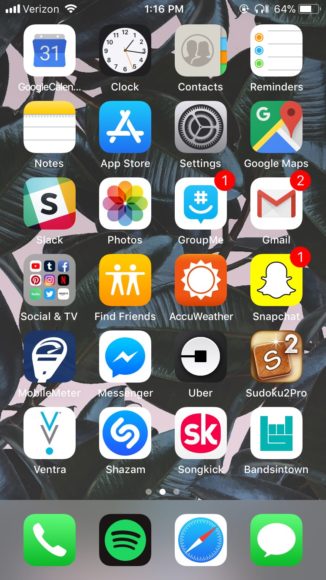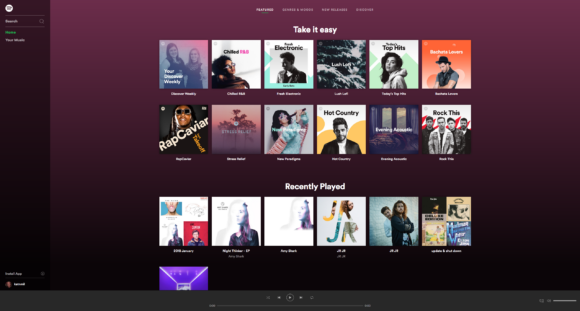Background, Plan:
I chose to use Instagram and their Stories feature for my performance piece. Instagram rolled out their Stories feature in 2016 but I’ve never used it before, so I was excited to experiment with it and see how it impacted both my user experience and how it reflected the experience of my followers.
I decided to play with the literal meaning of a “story” as a described sequence of events. I chose to showcase someone else’s story, challenging the convention of posting my own personal stories to my personal account. I uploaded photos to the slideshow gallery format and used them to tell a short story piece-by-piece over three days. I used words instead of pictures or video to describe the sequence of events to mimic the action of reading a book and to stand out against the expected photo/video format of Instagram stories. I intentionally kept the pieces visually consistent to show that they were part of the same story, but I changed the background colors to differentiate between installments. I posted each installment exactly 24 hours apart so only the third of the story that I wanted to showcase would be live at any given time. I observed how people responded and interacted with it based on the number of views and direct-message responses. Because Instagram approves of and almost encourages oversharing by allowing an unlimited number of story posts, I felt comfortable posting 8-10 pieces of a story per day.
I chose to use a song that told a story rather than a published short story from a book because the line and verse breaks allowed for an easy way to distinguish story installments. The shorter text of a song was more appropriate for the three-day time frame. I shared a verse from “Danny, Dakota & the Wishing Well” by A Silent Film (2012) every day for three days. Each line from a verse was its own post to my story.
Day 1, Verse 1 – 10 posts:

Day 2, Verse 2 – 9 posts:

Day 3, Verse 3 – 8 posts:

Audience Reaction:
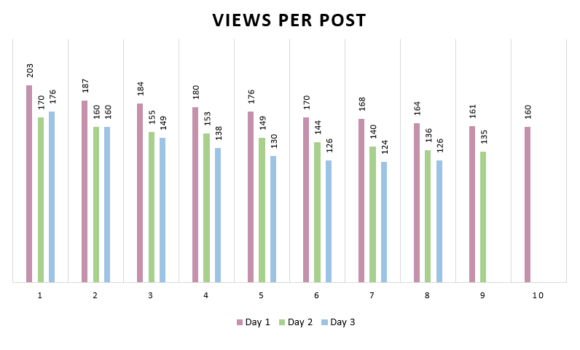
- Day 1: 203 → 160 (lost 43 people, 78% finished)
- Day 2: 170 → 135 (lost 35 people, 79% finished)
- Day 3: 176 → 126 (lost 50 people, 71% finished)
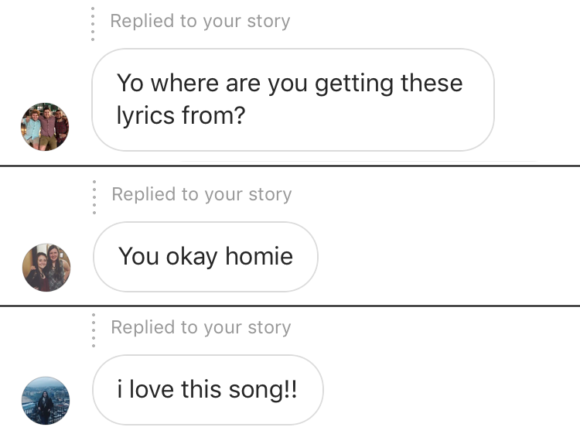
From the first to last post I retained about 62% of viewers.
I received 3 direct messages responding to or questioning my story posts. These are from (in order) a good friend, my best friend, and then an acquaintance. I also got a couple confused comments from friends in person.
Conclusion, Evaluation:
I had several questions before beginning the experiment:
- How many people would choose to view my story? I have a public account with 538 followers, so my story was visible to anyone who wanted to look.
- Will people be curious/interested and tap through until the end, or will they get bored and swipe away before they’re finished? Will their interest span multiple days, or will it diminish significantly by the third day where people will know what to expect?
- Will creating a “boring” story through sharing impersonal content lead to people unfollowing my account? How will it affect responses through direct-message? Will deviating from an expected posting style confuse close friends and/or strangers?
- In a broader sense, is the unlimited Instagram Stories format effective in engaging users? How much content can you provide and still have people realistically tap all the way through? How does producing consistent, predictable content affect viewer retention?
My first post in the first installment got 203 views (38% of followers), which dropped to 126 views (23% of followers) by the final post of the third installment. This drop in viewers over time was expected, but I was definitely surprised that 203 people were even willing to view my story to begin with. I was also surprised to see that most people (over 70%) tapped through to the end of the story once they had started the sequence, and this percentage didn’t diminish significantly over three days. I wasn’t surprised to see the amount of viewers decline over the course of the individual installations as well as over the course of the experiment. I lost two followers over the three days, but since my follower count fluctuates every couple of days because of spam/bot followers my overall follower count seems unaffected by the performance (admittedly, a relief). I was surprised that one of my acquaintances reached out to comment on my posts but I was happy to share her enthusiasm for the song. Changing my posting style from occasional, highly curated posts to a high number of seemingly random stories definitely attracted attention from the people who know me well; it’s interesting to see how much we can infer about a person from sudden changes in their online habits.
I would be interested to see how the results changed with an experiment that used a longer, more complex story over a longer period of time or challenged the idea of an unlimited Instagram Story. I think the results of the experiment would have been much more dramatic even if I had continued it for just a fourth day. I’d also love to see the retention data for brands/artists that regularly share large amounts of consistent content on their stories – sharing content this way seems much more visible than I initially realized.
